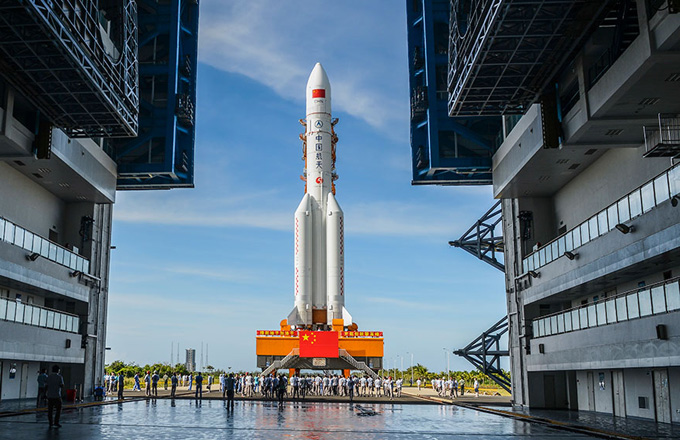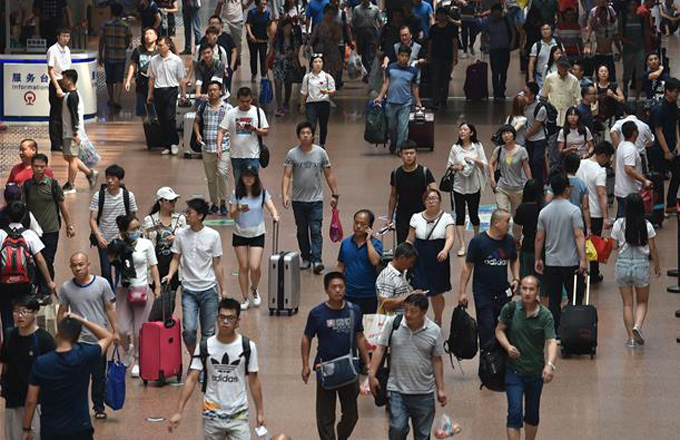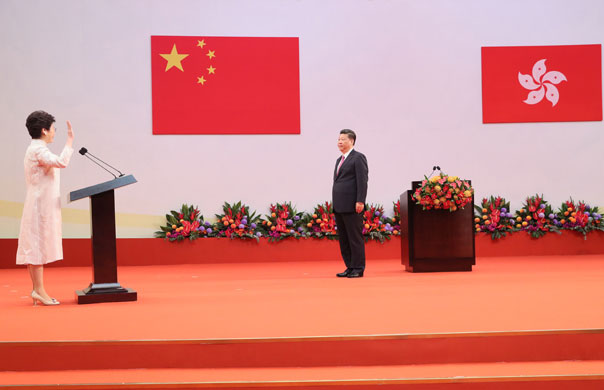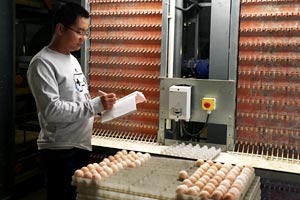City's retailers banking on a return of the 'golden era'
 |
|
As the mainland and regional economies recover from their troughs, Hong Kong retailers, who have been battered by a slump in visitor numbers, notably from the Chinese mainland, have been advised to come up with new sales strategies, including expanding their online operations. XAUME OLLEROS/BLOOMBERG |
Hong Kong's retail business made a quantum leap in the decade that followed the fateful onset of the SARS epidemic (Severe Acute Respiratory Syndrome) in early 2003 that almost brought the industry to its knees.
It was the start of the "golden era" for local retailers who were bathing in fortune brought about by a host of measures initiated by the central government to put Hong Kong's economy back on track, notably the Closer Economic Partnership Arrangement (CEPA), which was sealed in late June 2003, and the launch of the pacesetting Individual Visit Scheme (IVS) for Chinese mainland residents a month later.
The IVS kicked off with residents in four major cities in neighboring Guangdong province being allowed to come to the SAR on their own without having to join tour groups.
One of the notable beneficiaries of the mainland's economic sweeteners had been leading Hong Kong apparel chain Bossini. "With the central government's support, the signing of the Closer Economic Partnership Arrangement and the relaxation of restrictions on travel to Hong Kong by mainland visitors had ignited the revival of the local economy and consumption. This is helpful to the retail business in Hong Kong," Bossini International Holdings Ltd said in its 2003-04 interim report.
Bossini posted a profit of HK$3 million for the six months ended Sept 30, 2003, while its net profit reached almost HK$17 million for the six months ended December 2016.
China's resumption of sovereignty over Hong Kong in 1997 and the launch of the IVS in mid-2003 have been very positive for Hong Kong's retail business and companies such as Bossini, recalled Paul Chan, the group's executive director.
Chan, who joined the company as a finance manager in 2002, said the chain founded by prominent entrepreneur Law Ting-pong now operates some 40 stores in Hong Kong and more than 150 outlets on the mainland. The first Bossini store in Hong Kong opened in 1987, followed by its maiden outlet on the mainland-in Guangzhou-in 1993.
He told China Daily the past 15 years have witnessed ups and downs in the local retail scene. "We had gone through a critical period, especially the SARS outbreak in March 2003 and the financial tsunami in 2008. You know, there were a few apparel retailers like us who had started off in the 1980s, and they didn't make it," he said.
Thomson Cheng Wai-hung, chairman of the Hong Kong Retail Management Association, agreed that the city's retail business has seen tremendous growth following the IVS' launch.
"In 2013, Hong Kong's total retail sales amounted to almost HK$500 billion, an all-time high and nearly three times the figure recorded in 2003," said Cheng, adding that the number of mainland travelers to Hong Kong had reached 40 million in 2013. "This is marvelous, considering that Hong Kong's population is just about 7 million."
He said each mainland traveler staying overnight in Hong Kong spent an average of HK$9,000 in 2013, exerting a huge impact on the local retail industry.
However, Chan said that while the meteoric increase in the number of mainland tourists had meant more business for Bossini, it had triggered fierce competition.
Everyone had wanted a slice of the cake after the IVS started, he reminisced, with a string of foreign apparel brands, like Zara, H&M and Uniqlo, rushing into Hong Kong.
But, as the mainland visitor pool began to shrink in the past three years, Bossini has had to bite the bullet. Some of its large stores in prime shopping areas have seen sales to mainland customers plummet to 50 percent from a peak of 70 percent.
Looking ahead, Chan said Bossini will continue to uplift the production of children's attire following the mainland's scrapping of its one-child policy. It will also expand its franchising business, which covers close to 30 countries and its e-commerce business on the Chinese mainland, which makes up about 15 percent of the group's total sales there and is still growing very fast.
According to Cheng, the number of cosmetics and drugstores in Hong Kong had swelled 15-fold since 2003, along with a significant rise in the number of jewelry and watch shops, cashing in on the tremendous appetite of mainland customers for such products.
"From 2003 to 2013, rents for retail space in the city had catapulted 80 percent, with almost every global retail brand having set up shop in Hong Kong to capitalize on the mainland travelers' splurge and use Hong Kong as a springboard for penetrating the vast Chinese mainland market," he said.
The astronomical retail rents, coupled with the stiff competition from international brands, have put the squeeze on many local retailers. "But, I believe right now could be a good opportunity for local retailers to make a comeback after having been forced out of some prime locations and top-tier shopping malls in the past few years," Cheng said.
What Hong Kong retailers could do now is to revise their strategies to understand what consumers really want, improve services and see how they can rise to the occasion. Michael Cheng, Asia Pacific retail and consumer leader at PricewaterhouseCoopers, told China Daily that had it not been for Hong Kong's reunification with the motherland, the boom in mainland tourist numbers would have been unthinkable and the city's retail sector would have been stuck in prolonged limbo.
He's adamant that the introduction of the IVS in 2003 had unleashed the "golden era" for the local retail market that had lasted an entire decade.
In 1997, the number of mainland visitors to Hong Kong was just 2.36 million-1.1 percent less than the previous year's-and that year marked the outbreak of the Asian financial crisis that led to the crash of Hong Kong's stock and property markets as fears of a global financial meltdown grew.
By July, 2003, when the IVS kicked off, the number of mainland visitors had rocketed to 191.6 million, according to official statistics.
From 2004 to 2013, the SAR's annual retail sales continued to soar, even during 2009 when the city was buffeted by the global financial crisis. Retail sales during the nine-year period reached HK$494 billion-up a whopping 158 percent over 2004.
Michael Cheng noted that the annual growth rate of Hong Kong's population in the past 20 years has been less than 1 percent, so the local demand for retail products has been very stable.
"This means that the rapid growth of the local retail industry has been relying on tourist consumption, particularly on Chinese mainland visitors," he added.
The past three years, however, have been challenging for Hong Kong retailers as the mainland economy slowed, aggravated by the illegal "Occupy Central" protests which had seriously dented the city's image, as well as the abolition of multiple-entry permits for mainland travelers and the central government's ongoing crackdown on graft.
Michael Cheng is sanguine that the overall picture is set to get better this year with more tourists returning. He estimated total retail sales could hit HK$450 billion in 2017-2 or 3 percent more than last year's.
Hong Kong retailers will need to look afar and adopt a strategy that caters more to tourist rather than local demand, particularly from mainland visitors. One strategy is to develop their online business and look to the mainland's red-hot e-commerce platforms like Taobao, Tmall and JD to build up their own brands and draw mainland consumers.

























